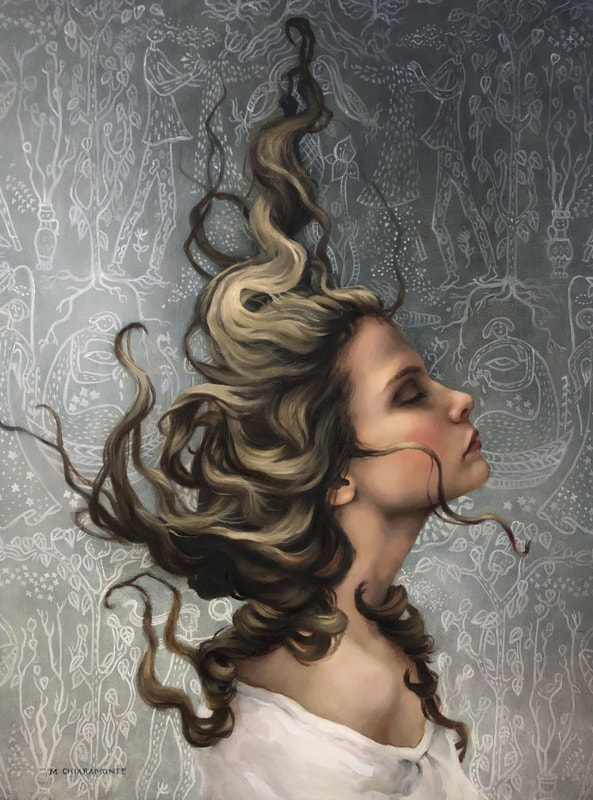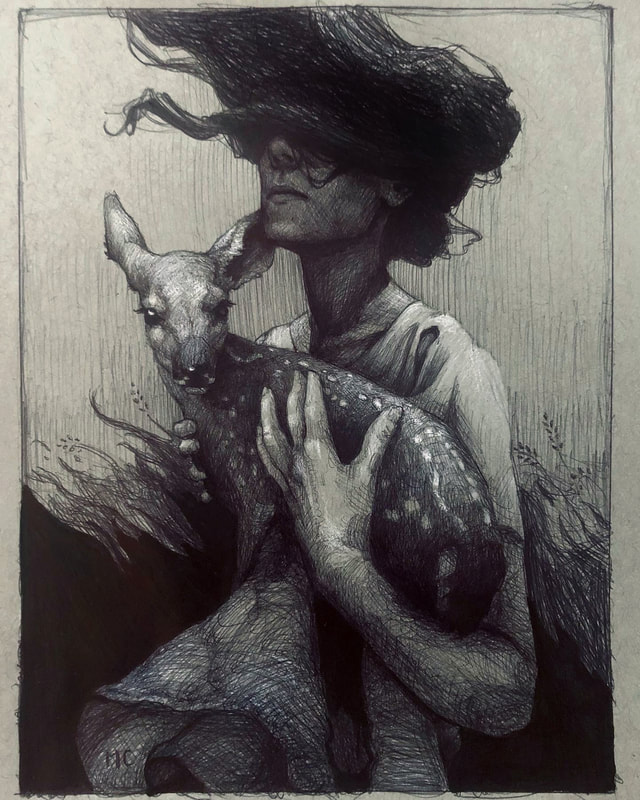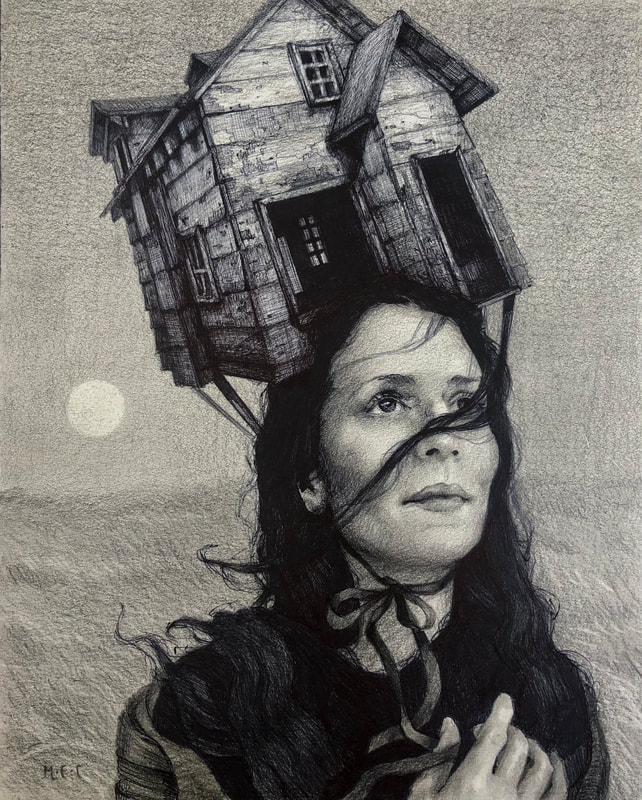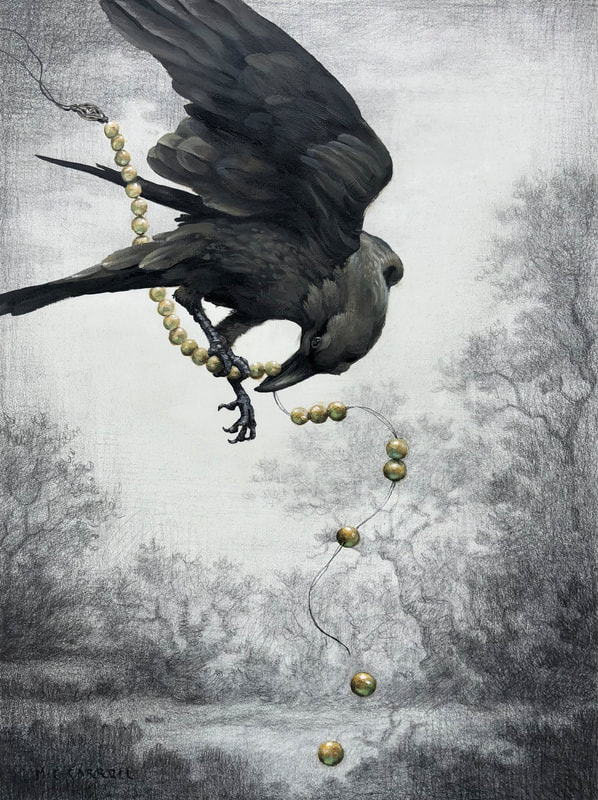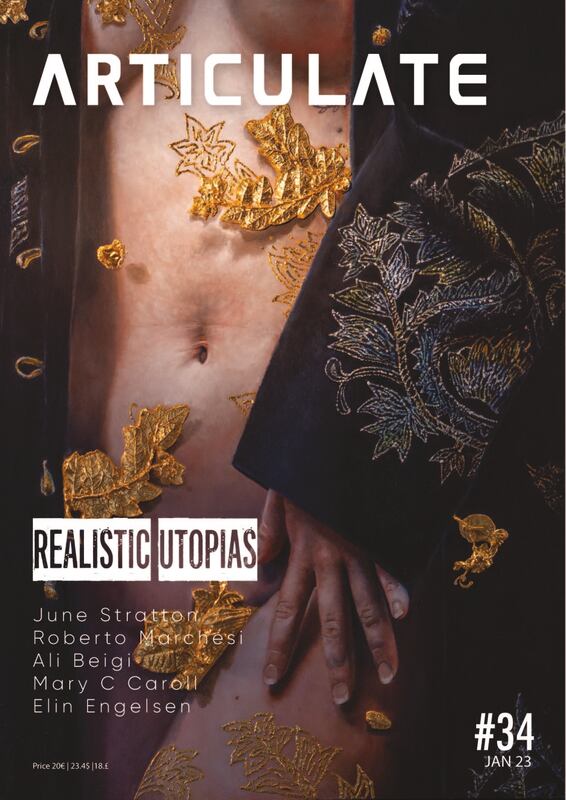The American artist Mary C Carroll is enchanted by the woods, noticing all the life that happens within a forest interior. |
Mary C Carroll
an article written by Mona Lisa Abramovich
The creative drive of the American artist Mary C. Carroll (b. 1979), currently is generated by nature and the life force of the forest. Carroll has been spending a lot of her time enchanted by the woods, noticing all the life that happens within a forest interior. Carroll works in small sets of work that are alike in media, content and size, specifically for an exhibition requiring a small body of work, but the rest of her work is otherwise less planned. Carroll finds that she has a difficult time clinging to a particular means of working for years on end. To Carroll the means of exploration weighs far too much to stay in any one mold she might create. Having a certain affection for graphite, Carroll endorses its perfection, the sound of it against paper, its simplicity and the void of color. For painting, Carroll uses acrylic largely because she’s allergic to oil. She’s tried to bounce back to oil over the years, but it hasn’t worked out as of yet. Finally, she’s in love with acrylic, exploring with fascination all its capabilities each time she’s using it.
Carroll has never once sat an empty canvas with the idea of the brush leading the brain. All of her work starts as a story. Carroll writes and thinks about narratives or something meaningful to her, that could have visual results, as though she was illustrating a page in a book. As a child, she used to invent little stories and illustrate them - the only part of her work that remains unchanged. When she finished high school, she made intricate and fine detailed graphite drawings that were intended to be as realistic as possible, bordering on hyperrealism. Throughout college, and while working on her master’s in painting and art history, the paintings of Carroll became a mess. She tried not to record what she saw anymore, but to insert her mind’s eye instead, which proved difficult. While the work was still interesting, she looks back now and finds it quite ugly. Currently she's combing the two concepts and trying to make something visually harmonious, with the inclusion of a narrative.
Carroll wants to paint what she loves. Anything that can excite her enough to love it, can turn into a painting.
In creating a good composition, Carroll believes that placement is the key element. It is like making a floral arrangement by considering the balance of color, tone, shape, content and so forth. There can be various results ranging from something you want to place on a burn pile to a masterpiece. Carroll considers I Liberati by the American painter Vincent Desiderio (b. 1955) as a masterpiece, since everything is placed exactly as it should be, states Carroll.
|
SUPPORTARTICULATE
www.articulate.nu SUPPORT Monday - Friday 8:00 - 16:00 [email protected] +45 30 48 19 81 Head Quarters VAT DK40953191 |
|

